ILDA KURTI
There were 8 damaged cultural monuments in the city of Durrës which is the epicenter of the earthquake of November 26, 2019, and 4 out of 8 were classified as “high-risk monuments”. Following the emergency response, the cultural institutions in the Albania were expected to start the restoration process.
In March 2021, the Minister of Culture Ms. Margariti, during an inspection that was carried out in the presence of the Prime Minister, Mr. Rama, in Durrës, stated that the restoration work would begin within a week. However, 1 year and eight months after the earthquake, the restoration process only started in Tower C, the Venetian Tower of Durrës, while the other 7 monuments have not been restored yet. According to the Ministry of Culture, other cultural assets are under the process of concluding the procedures for the restoration, but the total value of the budget foreseen for this process is not provided by them.
With regards to the restoration of the cultural heritage ruined by the earthquake, the American Embassy has awarded the Ambassadors Fund, a grant of 800,000 dollars, financing this process for 4 monuments in Durrës, Kruja and Preza. The European Union, through the EU4Culture program, is going to invest 40 million Euros in the restoration of earthquake-affected cultural monuments.
“Faktoje” verified 8 historical buildings in the cultural heritage sites of the city of Durrës, and it turned out that the only one which was being restored is Tower C, whereas the other cultural monuments are still waiting for the decisions of the institutions responsible for the restoration and maintenance services.
The earthquake of November 26, 2019, was highly destructive for the cultural monuments.
There were 8 damaged cultural monuments in Durrës, the epicenter of the earthquake, some of them classified as “high-risk monuments”, whereas a part of the objects were classified as *Phase One monuments. After the emergency response, the cultural institutions in the country were expected to start the restoration process.
On March 26, 2021, the Prime Minister Rama, accompanied by the Minister of Culture inspected the historic area of Durres. During the site inspection, as they were walking near the building ‘Tower C’, which is the defensive wallof the Venetian Tower of Durrës, the most highly-affected, inter alia, Margariti stated as follows:
“We have been making progress, not only with the emergency project, but we are already in the process of dismantling the entire building and next week we plan to start the restoration process. All demolished parts have been systematized, cataloged, inventoried and they will be restored to their positions and there will also be further reinforcement”.
“Faktoje” addressed a Request for Information to the Ministry of Culture, where we requested to know which of the historical objects in Durrës were ruined and a description of the type of damage.
“Faktoje” also asked about the time the restoration process was planned to be carried out and what also about the budget foreseen for this kind of intervention.

Request for Information addressed to the Ministry of Culture, dated: 25.05.2021
Based on the official response, this is a case consisting of three types of damage to the given monuments: Structural damage, Detachment Structural Deformation and Damage to non-structural elements.
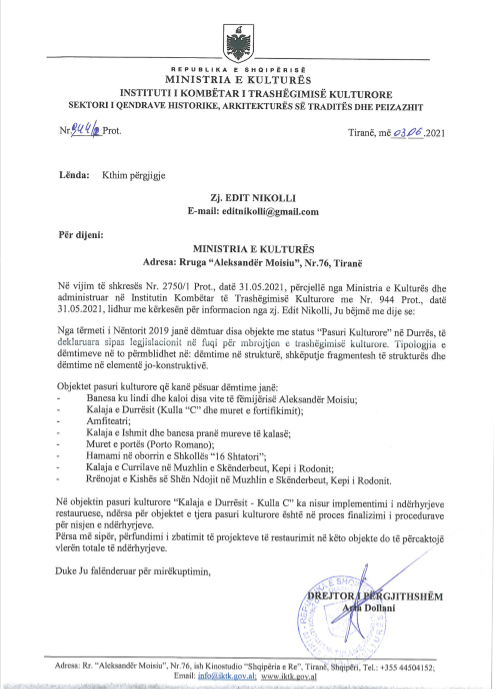
Response of the Ministry of Culture, dated 03.06.2021
With regard to the earthquake-affected monuments in the city of Durrës, find below the inventory list:
- The building where Aleksandër Moisiu was born and where he spent his early childhood years;
- The Venetian Tower of Durrës – Tower‘C’ and the fortification walls;
- The Amphitheatre of Durrës;
- Ishëm Castle and the building near the castle walls;
- The walls of the Porta Romana (“Roman Gate”);
- Hammam in the school yard ‘16 Shtatori’;
- Rodoni Castle or Skanderbeg Castle on Cape Rodoni;
- The ruins of St. Anthony Church is located at Rodon Cape;
However, the Ministry of Culture does not provide any information regarding the cost planned, stating that: “The completion of the implementation of the restoration projects in these facilities will determine the total value of the interventions.”
Despite the fact that we did not received an explicit answer about costs, “Faktoje” reviewed the original document published by the Ministry of Culture “Report on the damages to cultural heritage sites caused by the earthquake dated November 26, 2019 ” (available on the link published from “Porta Vendore”) where it is reported that the Ministry of Culture has addressed a request for financial support to the Ministry of Finance and the Ministry of State for Reconstruction, covering the 8 listed monuments in Durrës, requesting a total financing of 61,900,000 ALL.

Photo illustration of Request for Financial Support. Photo credits to“Porta Vendore”.
The US Embassy has awarded a grant of $ 800,000 through the Ambassadors Fund, for the restoration of the 4 most affected monuments in Durrës, Kruja and Preza. The European Union, through the EU4CULTURE program, is going to invest 40 million Euros in the restoration and revitalization of earthquake-damaged cultural monuments.
After 1 year and 8 months from the earthquake, Faktoje decided to visit the site in order to verify the current situation of these 8 historical buildings in Durrës.
- The Venetian Tower of Durres – Tower ‘C’ – the only one in the process of restoration
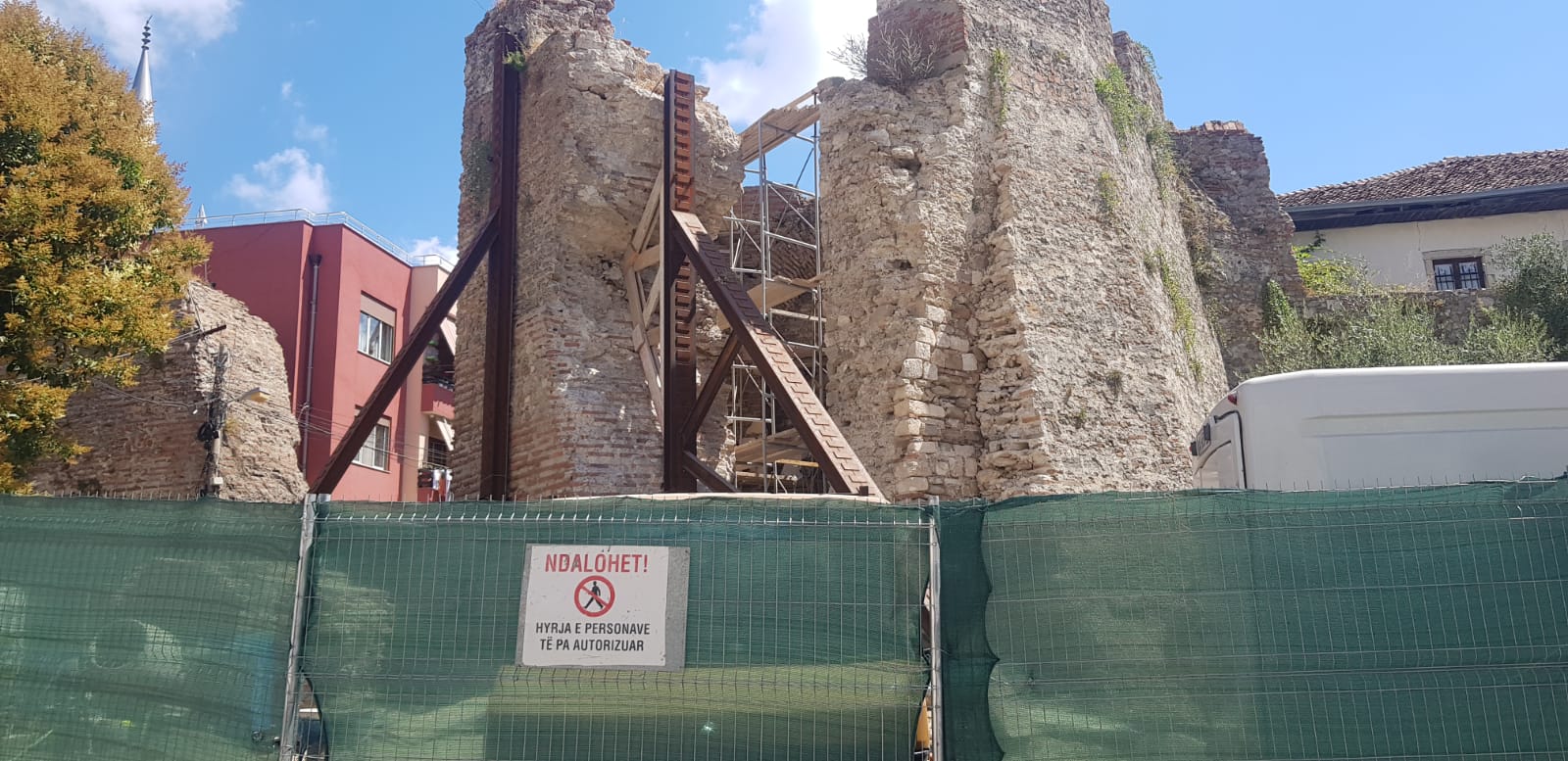
Photo illustration of Tower C. Dated 02.07.2021
One of the most highly-affected cultural heritage monuments of the city of Durrës is ‘Tower C’ in the Castle of Durrës, which holds the status of Cultural Monument of the First Category. Part of the tower has collapsed and damage has also been reported to some of its surrounding walls. The given monument received an emergency response from the National Institute of Cultural Heritage.
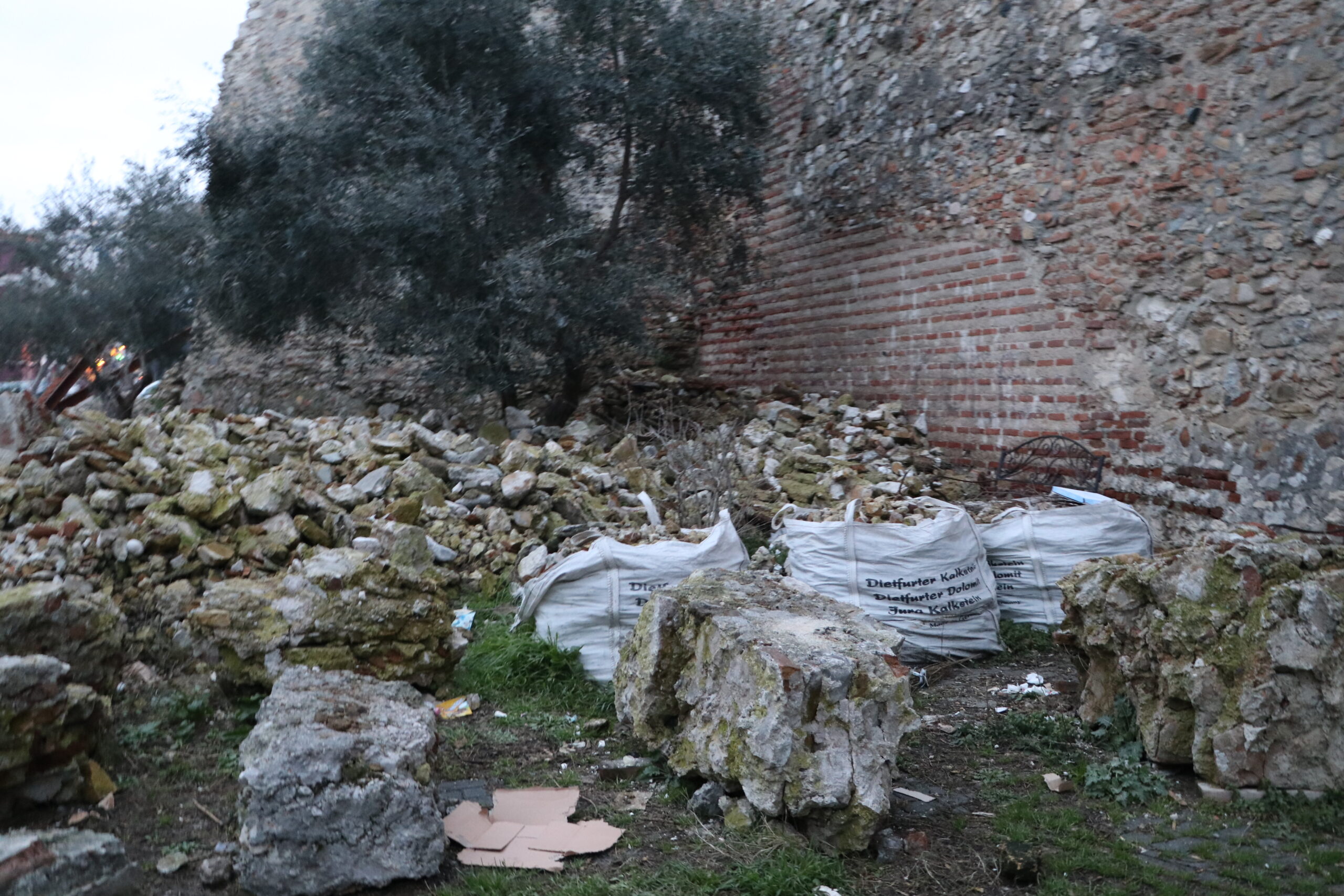
Photo dated 25.02.2021 © Inva Hasanaliaj
Faktoje had also inspected the site earlier in time.

Photo dated 25.02.2021 © Inva Hasanaliaj
According to the information table, the first phase of the rehabilitation project of Tower C has a total cost of 2,001,400 ALL.
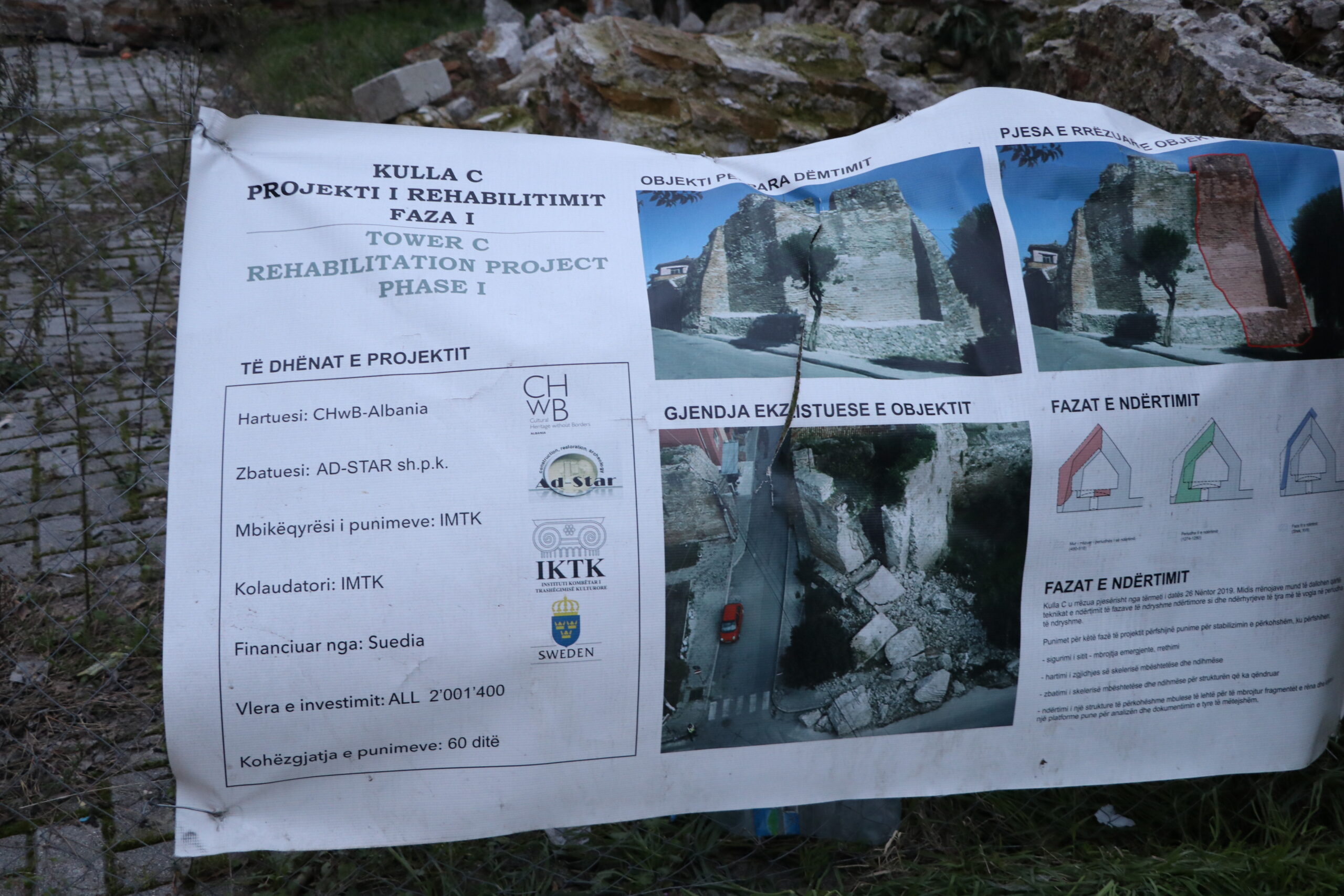
Photo dated 25.02.2021 © Inva Hasanaliaj
On July 2, 2021, Faktoje verified the project information panel on the construction site near Tower C, which states that the restoration process passed to the next stage. It also indicates that the project is funded by The U.S. Ambassadors Fund for Cultural Preservation, has been drafted by ‘Cultural Heritage Without Borders Albania’ [Cultural Heritage without Borders Albania], and that the works are being supervised by the National Institute of Cultural Heritage, and are being implemented by AD-Star sh.p.k.
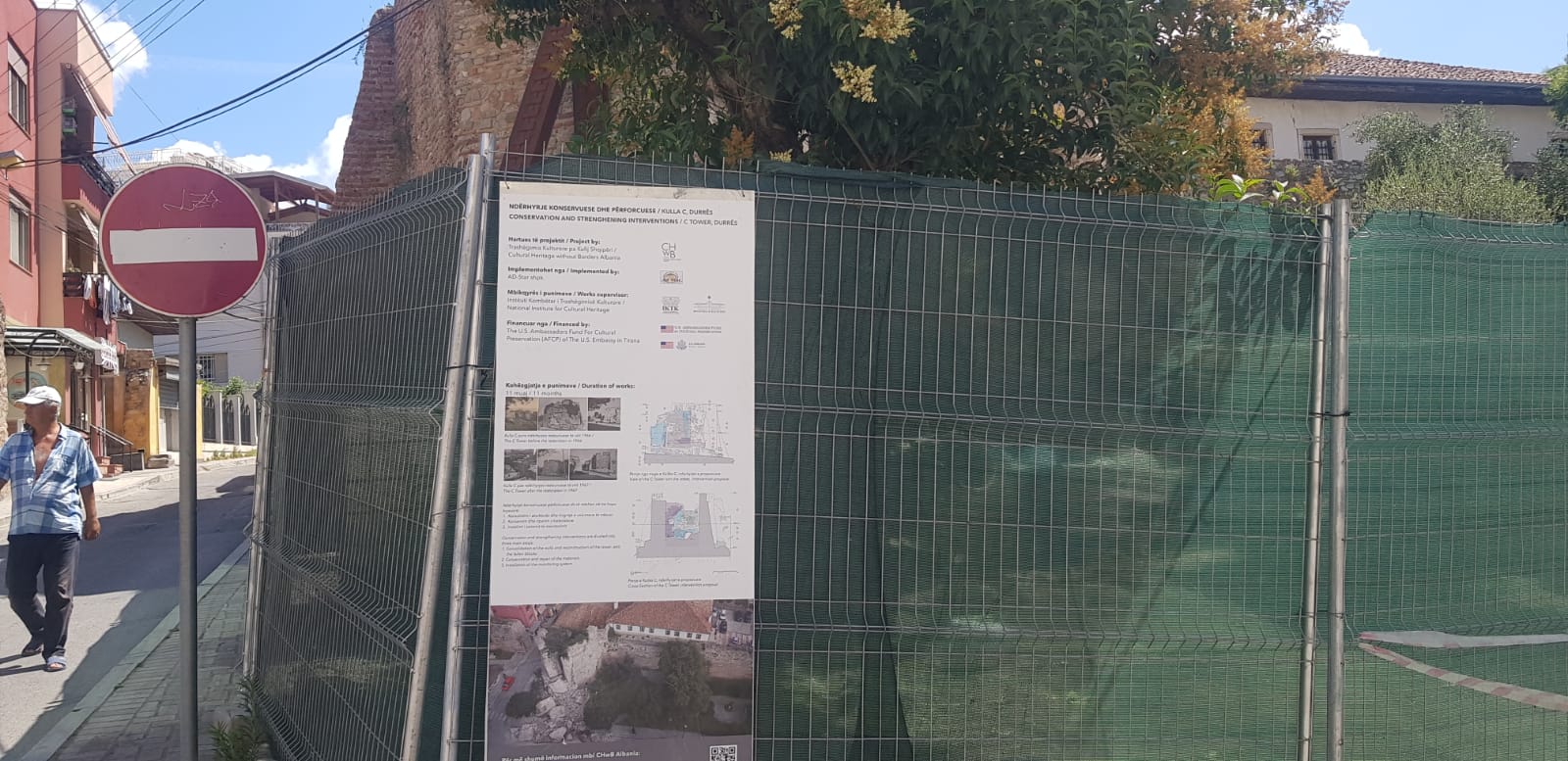
Illustrative photo of the information panel of the works at ‘Tower C’. dated 02.07.2021.
The information panel lacks detailed information regarding deadlines. It indicates: “Duration of works: 11 months” – but it is not known either when they started or when the works are supposed to be completed.
Regarding the slowness of the process, Minister Ms. Margariti apologized for the delay justifying it with the discovery of new spaces under the tower.
“The works have not advanced as there were findings in the lower part, empty spaces in the part under the tower and it was also carried out the cleaning of vegetation. It is the first time we are saying that we have such dismantling with metal constructions here in Durrës. A complete documentation has been made with all the news that we are provided with from the structure. “- said Margariti.
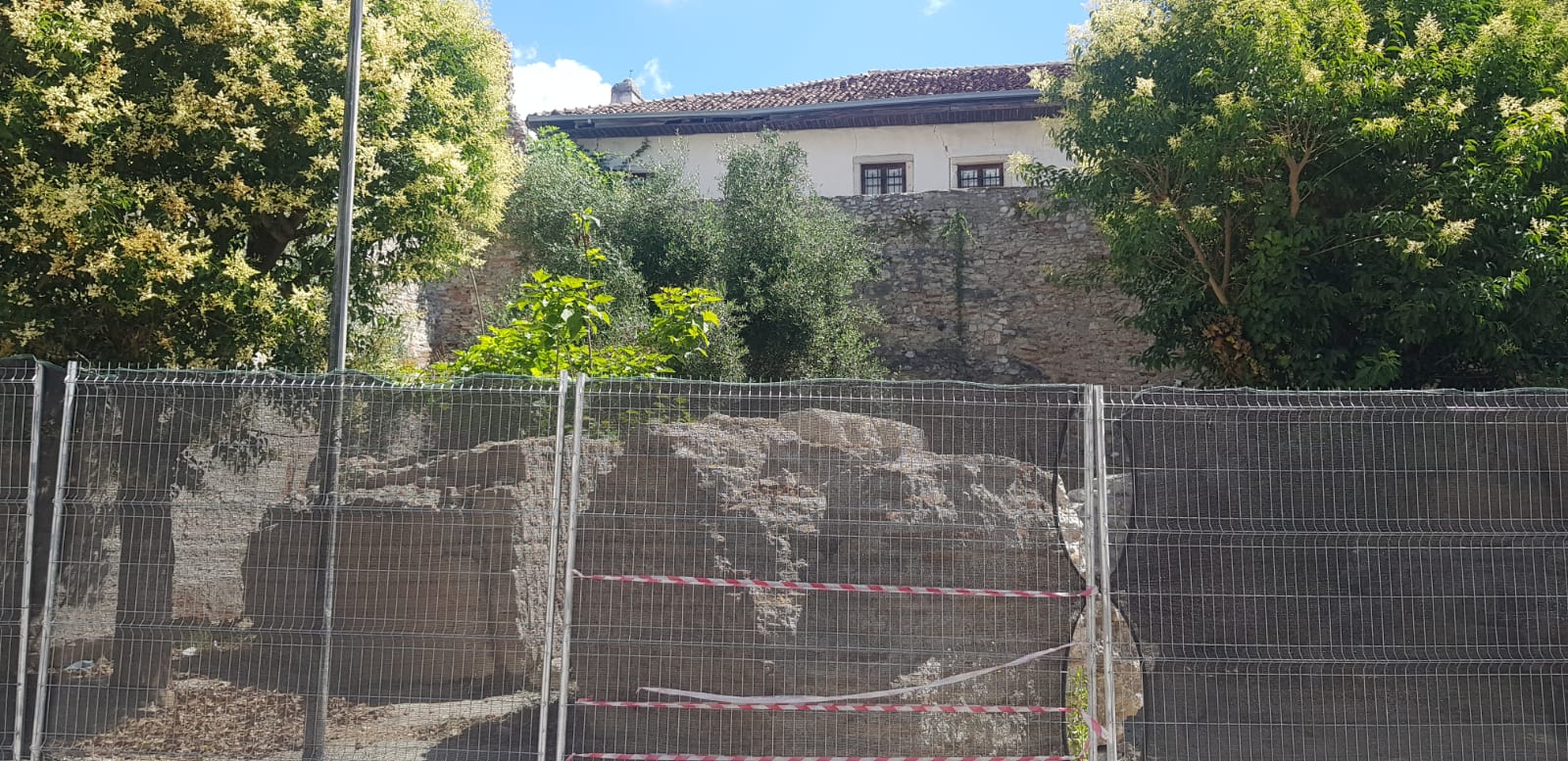
During the given verification, Faktoje noticed that the construction site was surrounded by metal structures and buckram that impeded people to pass there.
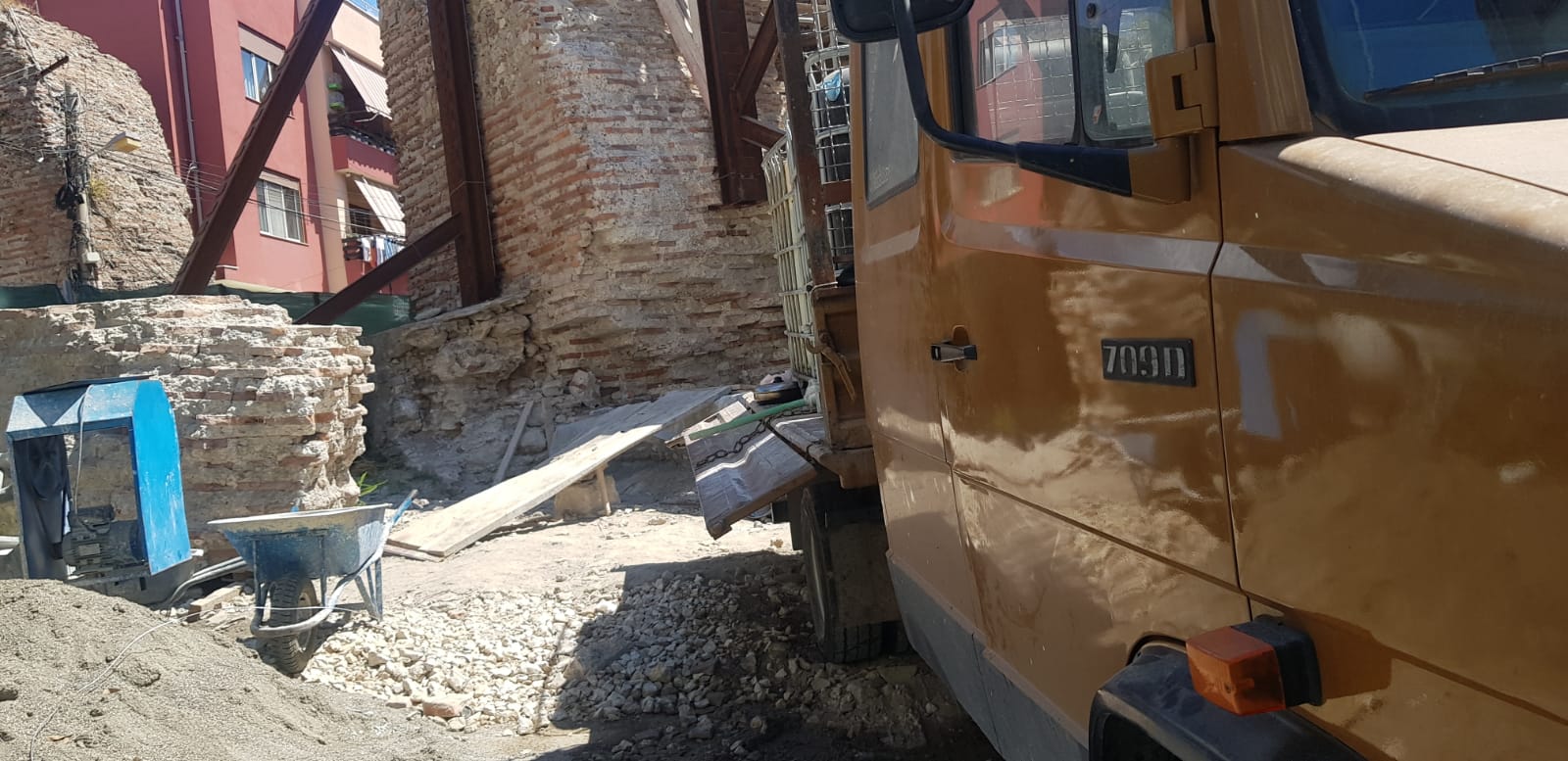
The presence of working tools at the fencing around construction site made it clear that works on Tower C had actually started to be carried out. Interviews with locals assured us that the works had started right there.
In addition to Tower C, Faktoje further verified the situation on the other surrounding walls for possible damage. We noticed that some of them had suffered cracks.
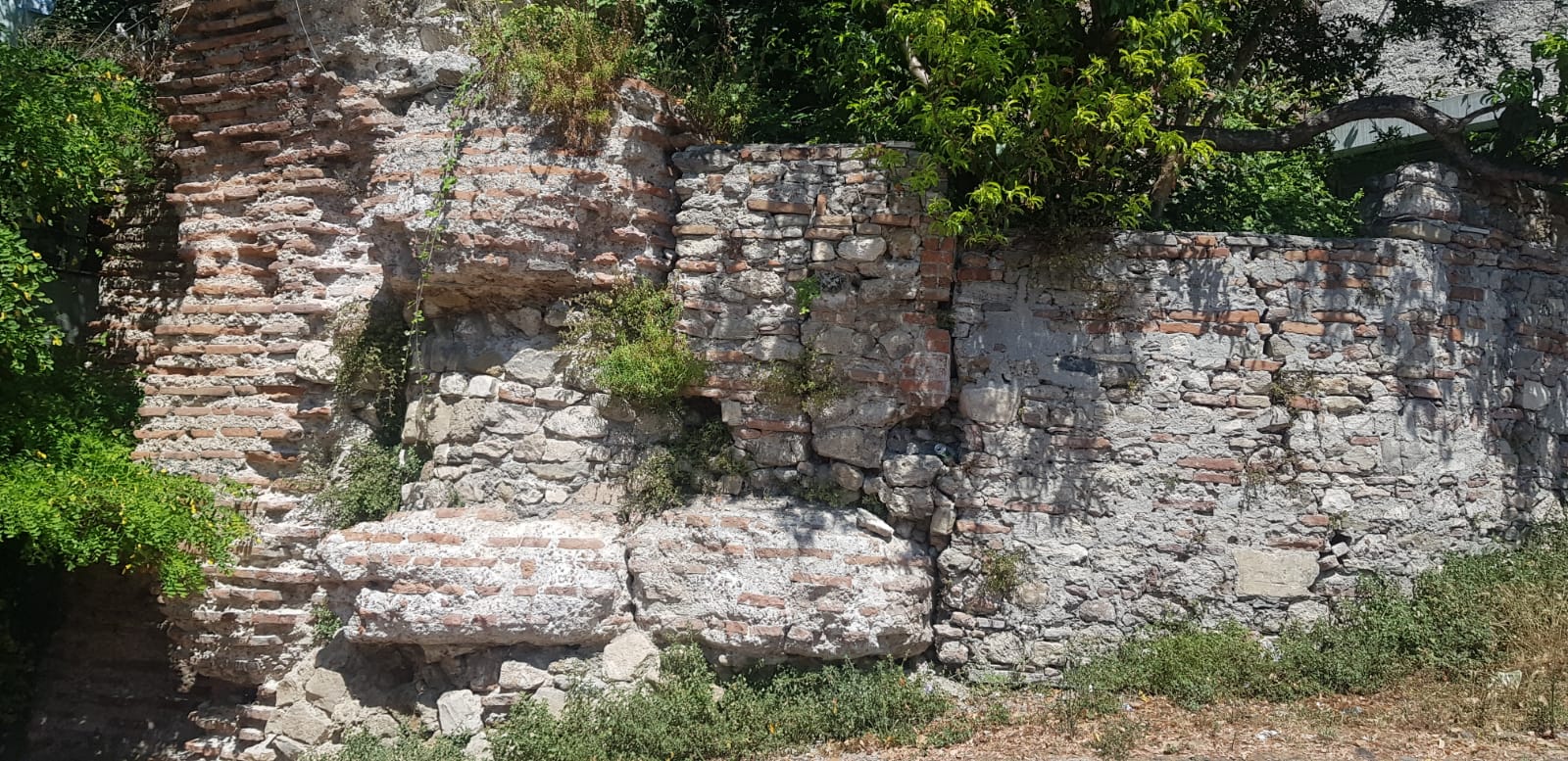
There were some cracks in the surrounding walls on the edge of the amphitheater.
- Ethnographic Museum of Durrës – closed with no traces of works

The building in the picture is the house museum in which Aleksandër Moisiu lived for several years during his childhood. Due to the building typology as a characteristic Durrës civic house with pergola, in ’82 it was opened as an ethnographic museum.
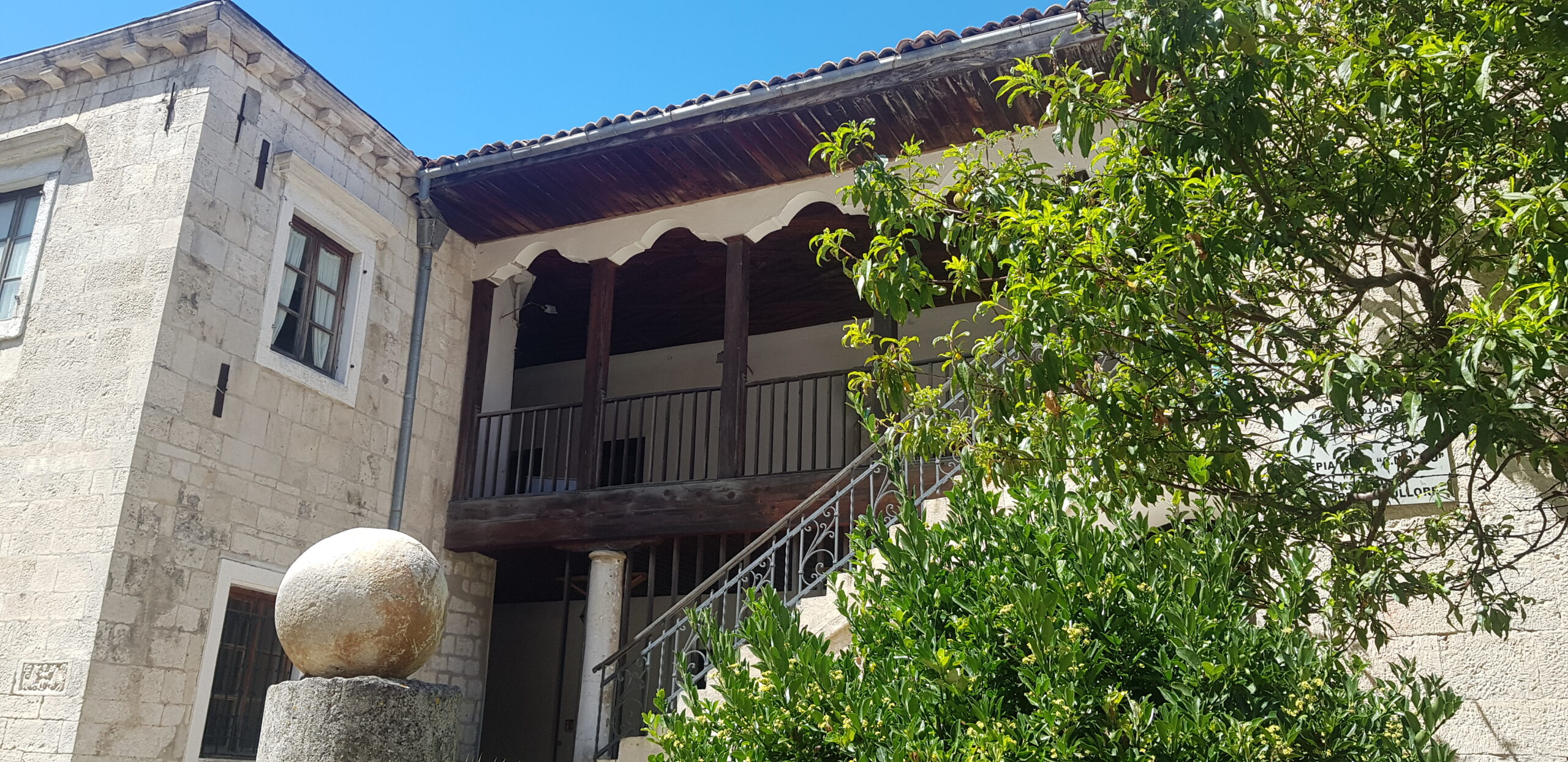
Following the earthquake, the Ethnographic Museum remains closed as it poses a high risk to visitors. Residents around the area told us that the structure of the house had been affected. During the site verification, apart from the temporary evacuation response, there were no traces of works in the locked building of the Ethnographic Museum.
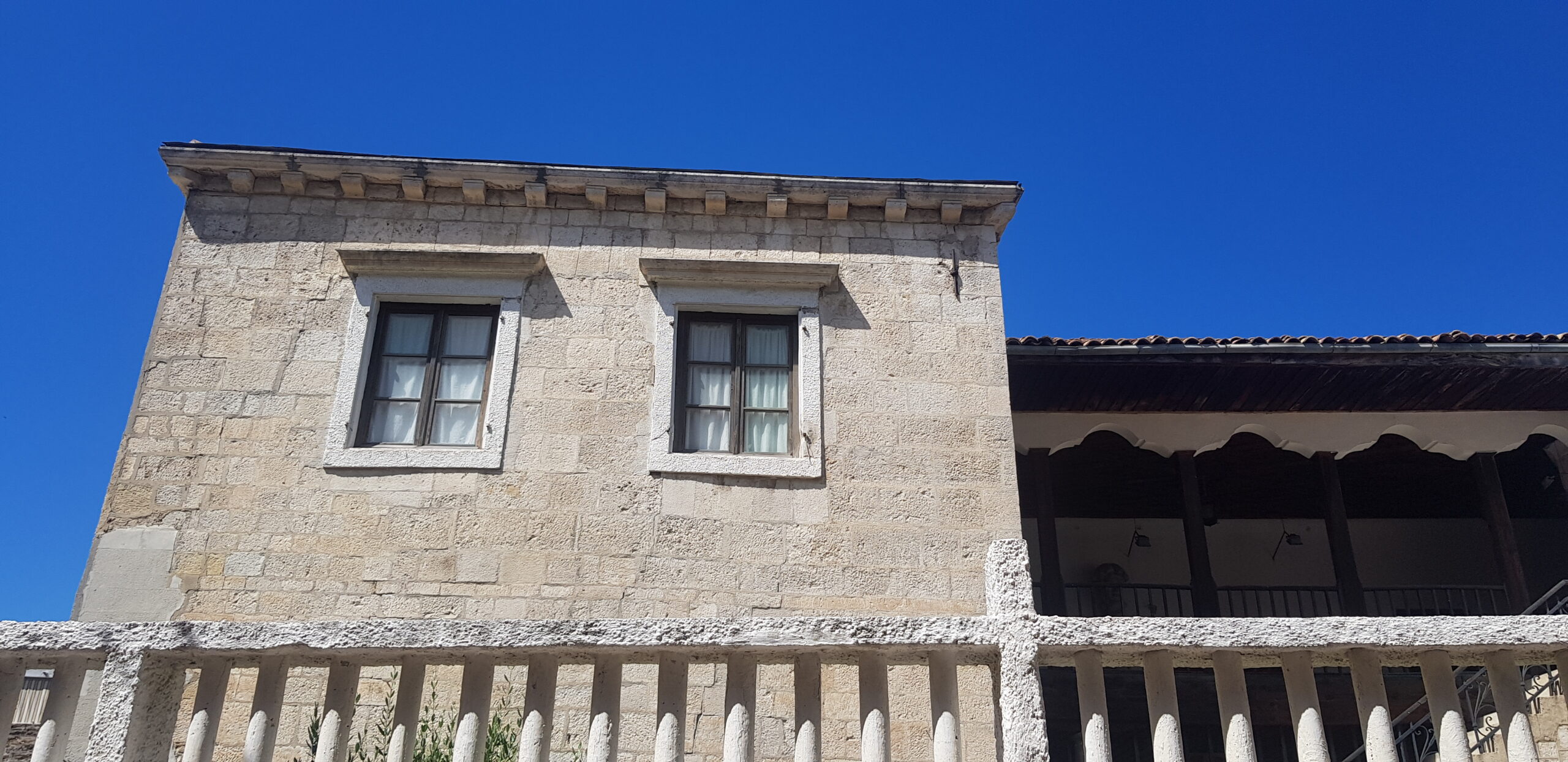
The above photo illustrates one of the cracks in the left tower of the house.
A.M., a resident of the city’s museum area, told Faktoje that: “The museum has been badly affected – as he points his finger from the tower to the left. -We have been told that there is a risk of collapsing and the beams inside may break. They directly closed the museum to the citizens and slowly removed the objects inside out of fear. ”
Based on the value addressed in the report of MK, the total damage of this monument is calculated in the amount of 8,500,000 ALL, of which 599,000 ALL are calculated to be used for evaluation, study and design.
- Durrës Amphitheatre– It has not been rehabilitated yet
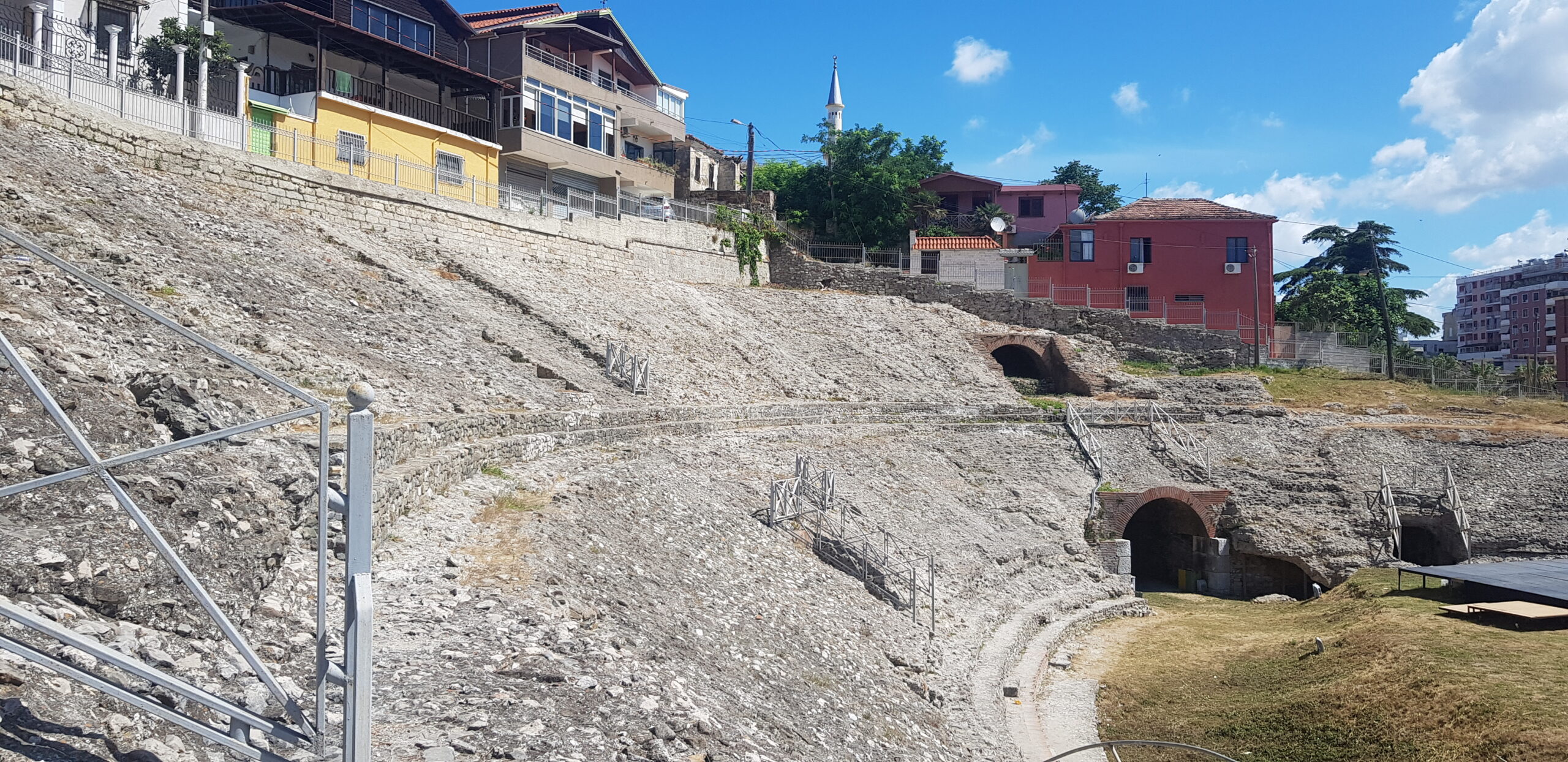
Photo illustration of Durrës Amphitheatre. Photo: 02.07.2021
The Amphitheatre built during the reign of Emperor Trajan is one of the cultural objects that characterizes the museum area of the city of Durres and holds the status of Cultural Monument of First Category. Even nowadays in this historic object the restoration process has not started yet.
Based on the value addressed in the report of the Ministry of Culture, the total damage of this cultural heritage site is estimated in the amount of 5,200,000 ALL, of which 364,000 ALL are calculated to be used for evaluation, study and design.
According to the sources of Faktoje, it was suspected that the geological structure could have changed as a result of the earthquake, thus endangering the Amphitheatre to sink below the current level.
Based on the site verification that Faktoje carried out, we noticed the following problems:

Detachment of stones and pebbles at the entrance of the amphitheatre. Photo: 02.07.2021
-In the entrance, to the left of the ticket office, there were some stones and pebbles that were detached from the masonry. Our sources informed us that this damage had come as a result of the earthquake.
Most problematic seemed to be the cracks suffered by St. Augustine’s Church.
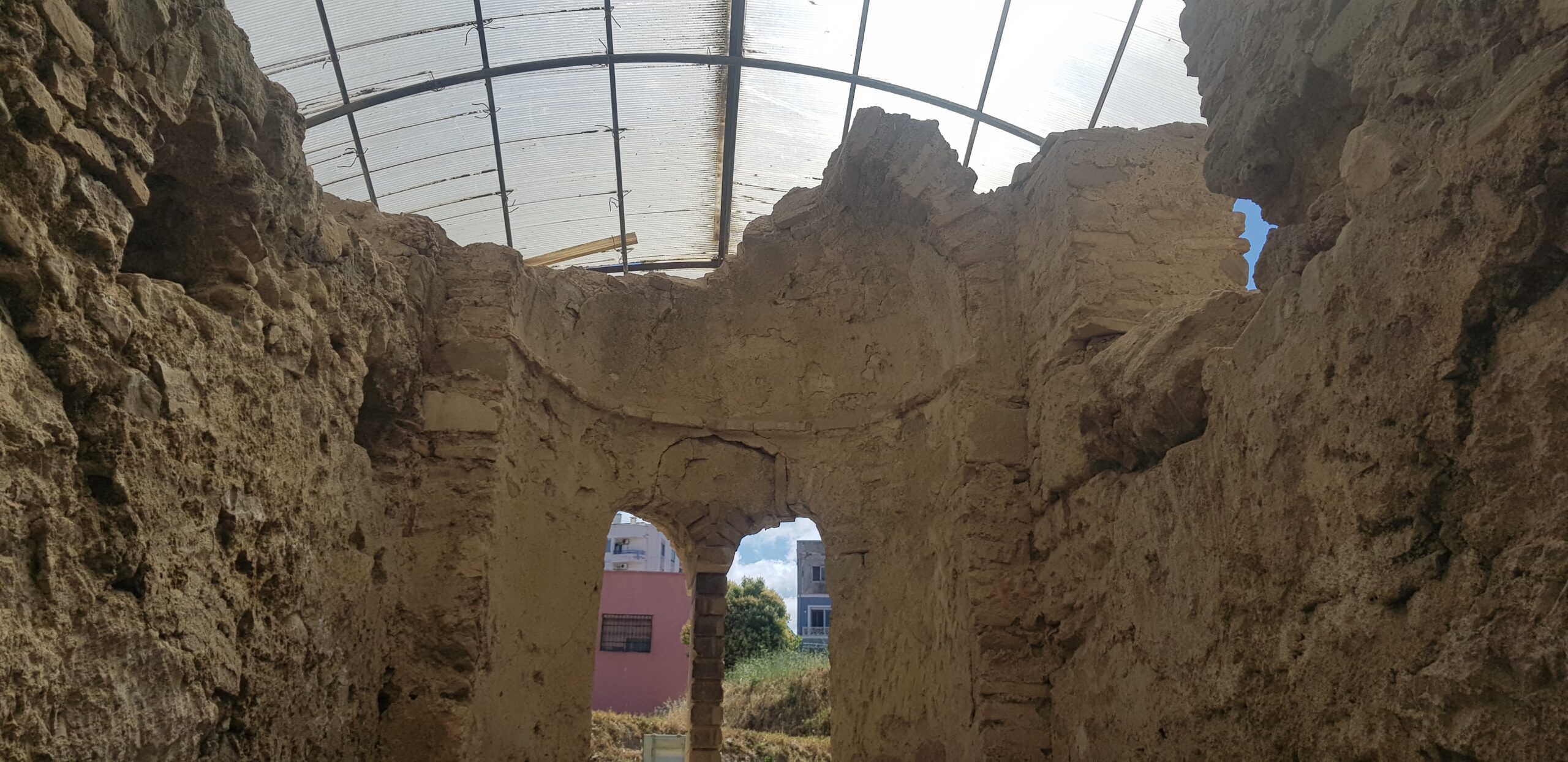
A crack could be noticed over the two window arches.

Also, two other cracks could be noticed in the length of the object, on both sides.
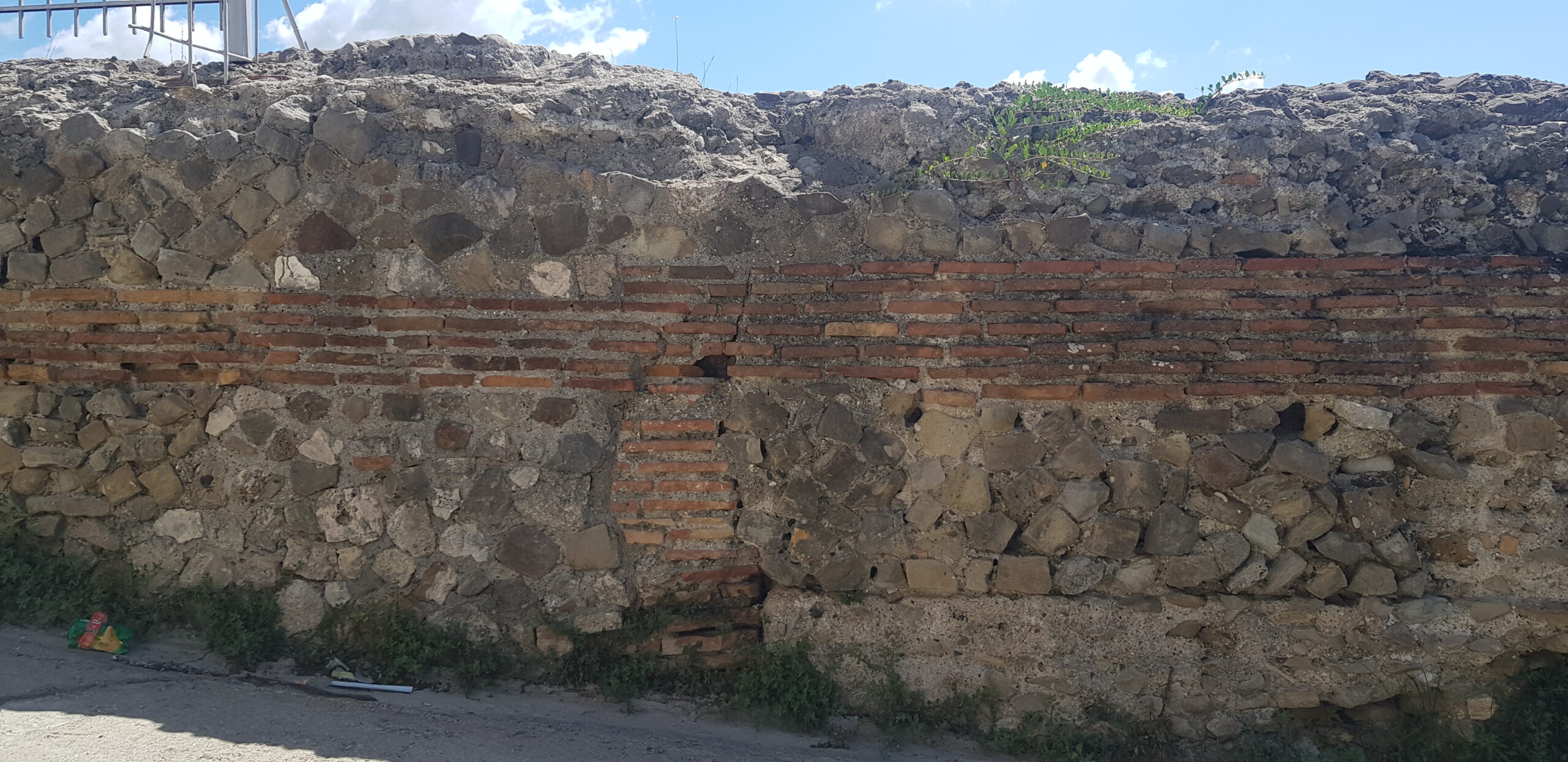
Cracks in the outer wall, which is noticed above the entrance to the Amphitheatre ticket office.
- Ishëm Castle – with no rehabilitation and maintenance
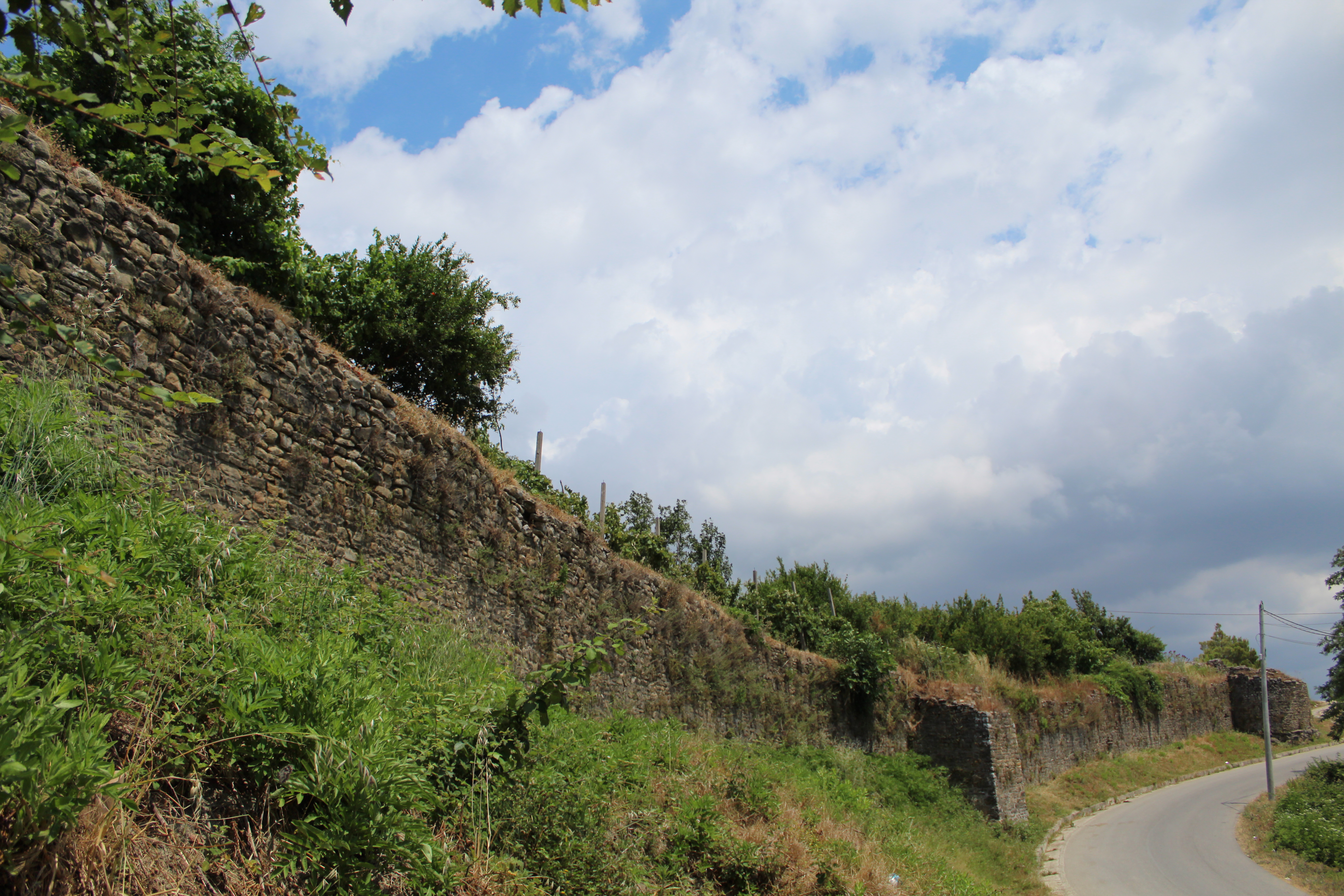
Ishëm Castle holds the status of Cultural Heritage Site of the First Category, but its restoration still seems far away. The historic building, even according to the residents of the area, has not been maintained for years.
V.T., 52 years old, resident of Ishëm, told Faktoje that the only care service performed right there was in honor of Ibrahim Kodra, the artist buried in the square in front of the castle entrance.
The building was kept locked and we were not able to continue the detailed verification inside it. Based on the external assessment that Faktoje made, there was no sign of the reconstruction process in this cultural heritage site. During the site verification, it is noticed that one of the castle towers was particularly affected, since some cracks were visible on both sides.
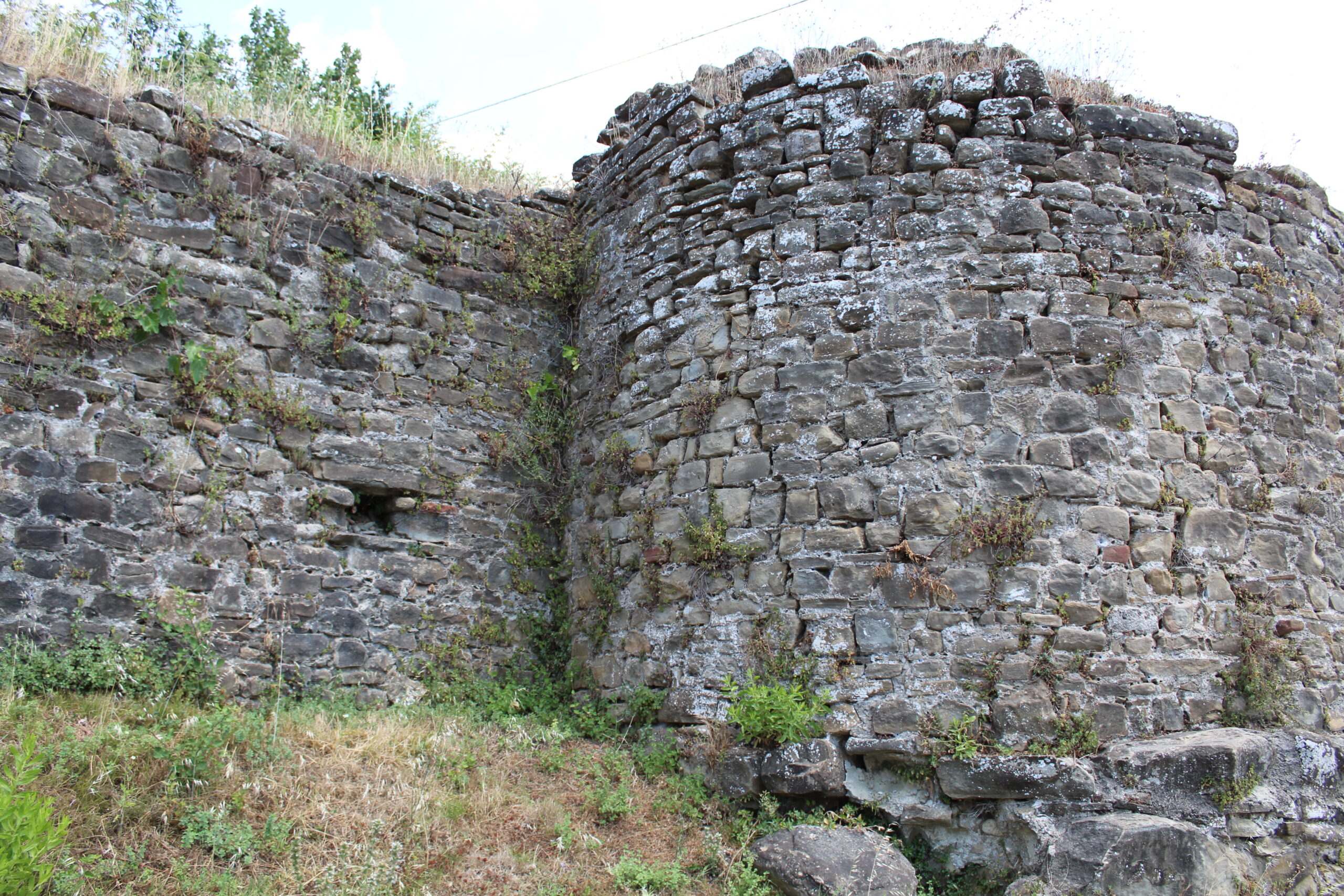
Based on the observation of the entrance area in front of the castle, the tower seemed to be in danger of collapsing because the curtain wall of the tower is bent.
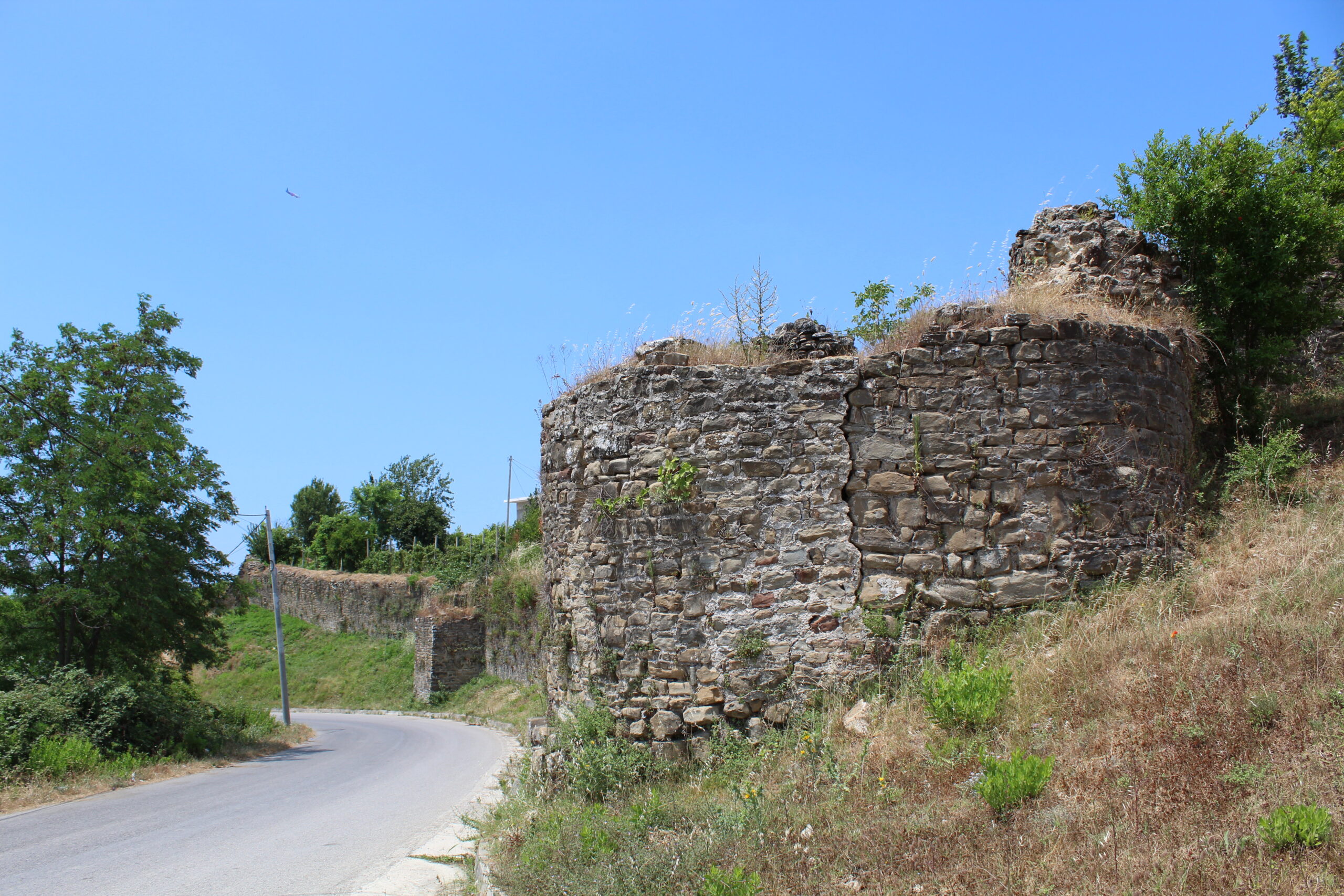
Based on the value addressed in the report of the Ministry of Culture, the total damage of this cultural heritage site was estimated in the amount of 3,600,000 ALL, of which 252,000 ALL are calculated to be used for evaluation, study and design.
- Gate walls in Porto Romano – more than an earthquake affected by “oblivion”
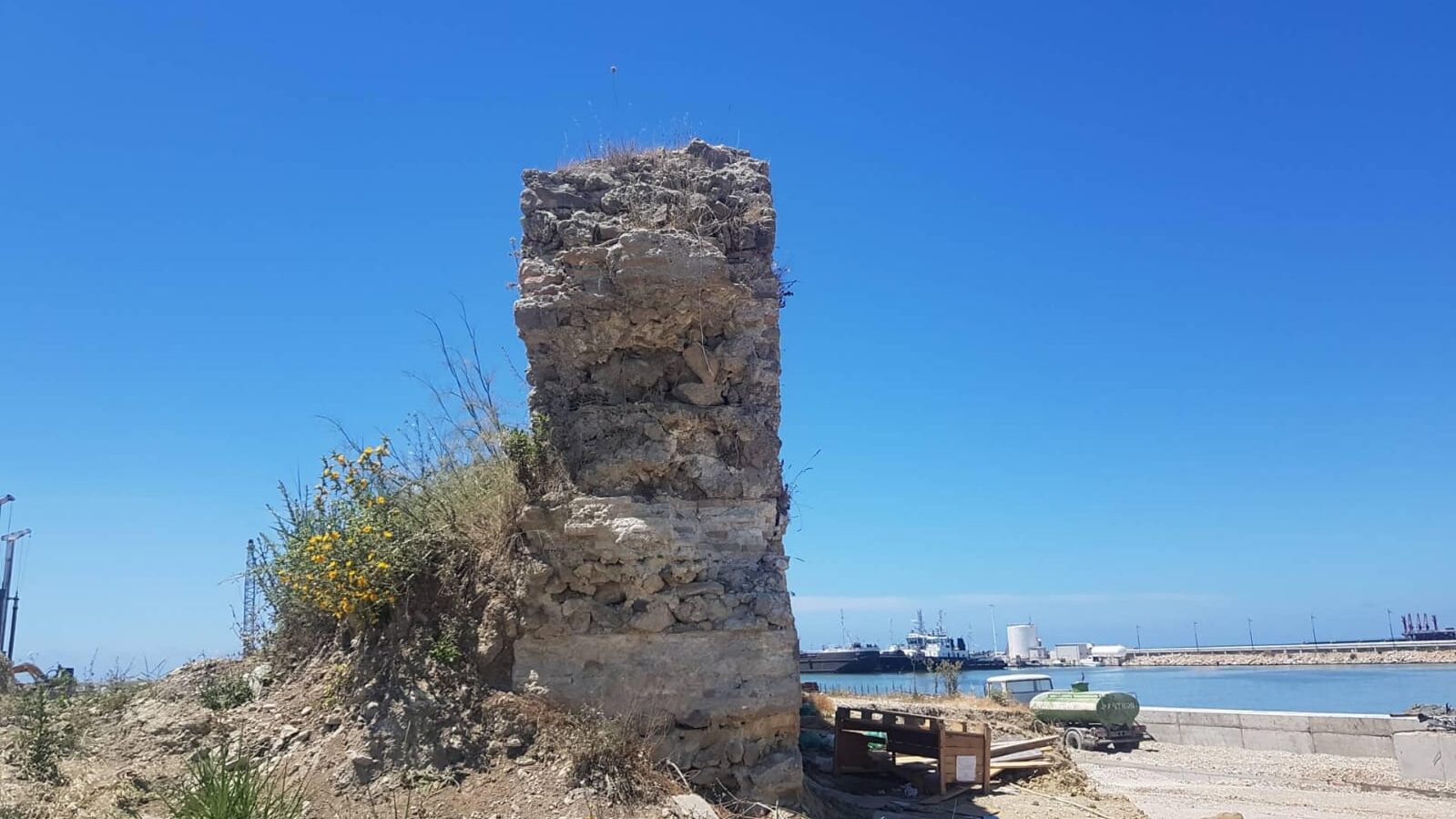
The work continues on the new port in Porto Romano, a few meters from the ancient wall.
The historic building had not been maintained, and it does not reflect anything from its former glory. Several cracks could be noticed in some parts of the wall.
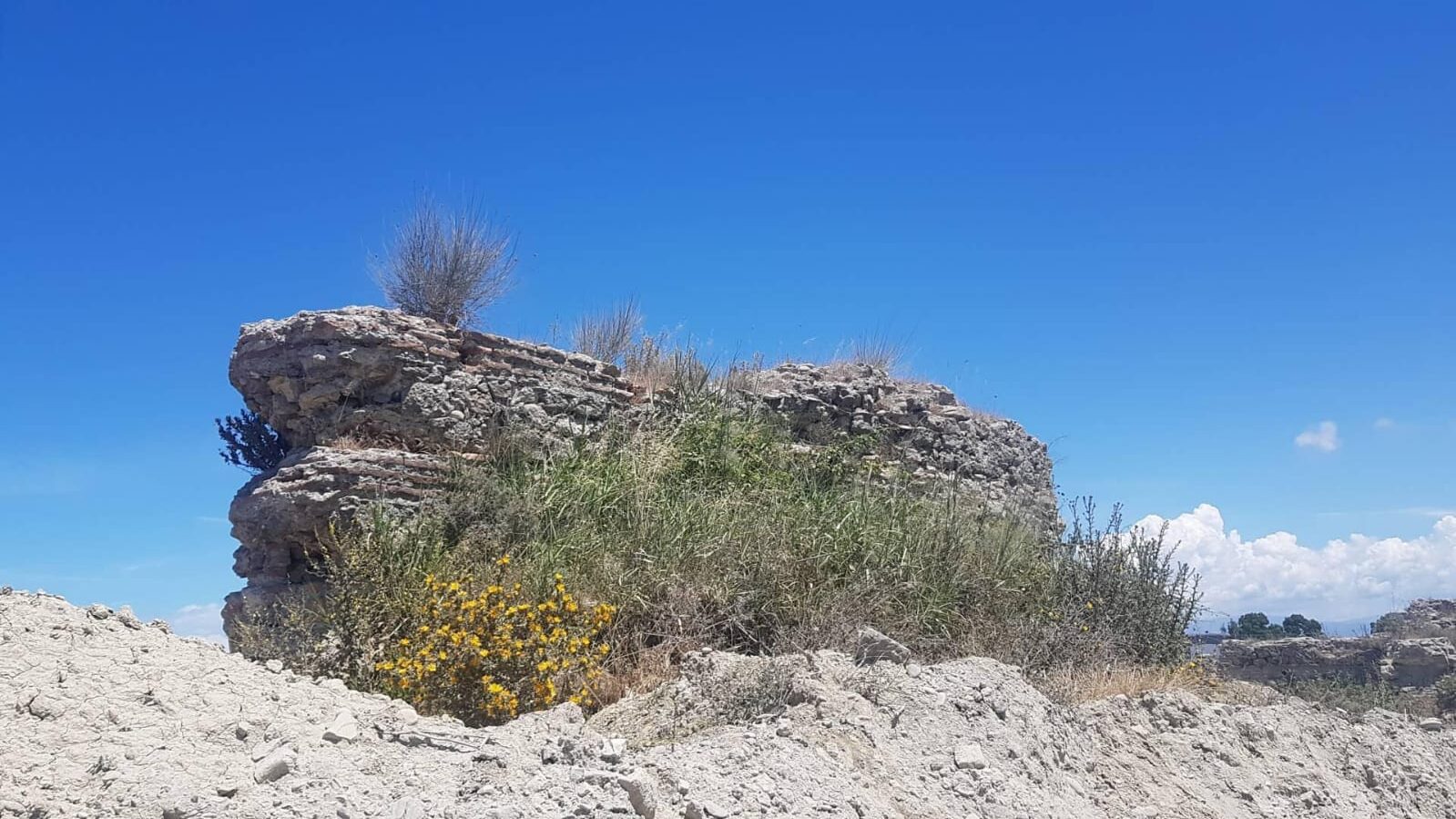
The works had caused the building to be covered with dust. The poor condition of the building showed that there had not been carried out any maintenance procedures for years. Weeds had covered each of its corners. This monument has been destroyed by negligence more than by the earthquake.
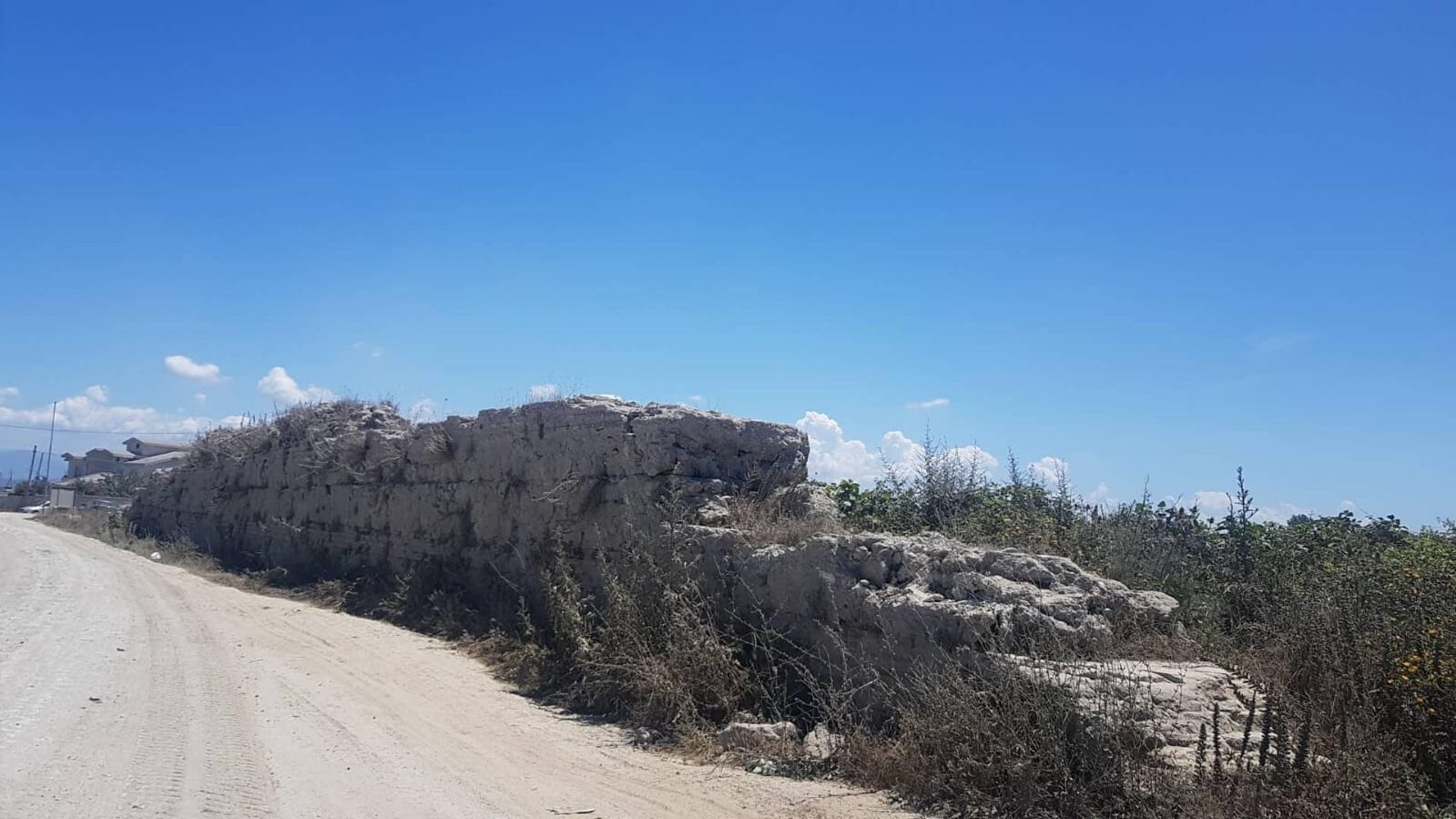
Heavy vehicles transporting materials for the construction of the new cargo port of Durrës used to pass there, regardless of the damage that could be caused to the supporting base of the building.
Based on the value addressed in the report of the Ministry of Culture, the total damage of the given cultural heritage site was in the amount of 2,000,000 ALL, of which 252,000 ALL are calculated to be used for evaluation, study and design.
Based on the verification carried out by Faktoje, there were no traces of restoration.
- Hammam in the school yard ‘September 16’ – It is “locked” and has no signs of restoration.
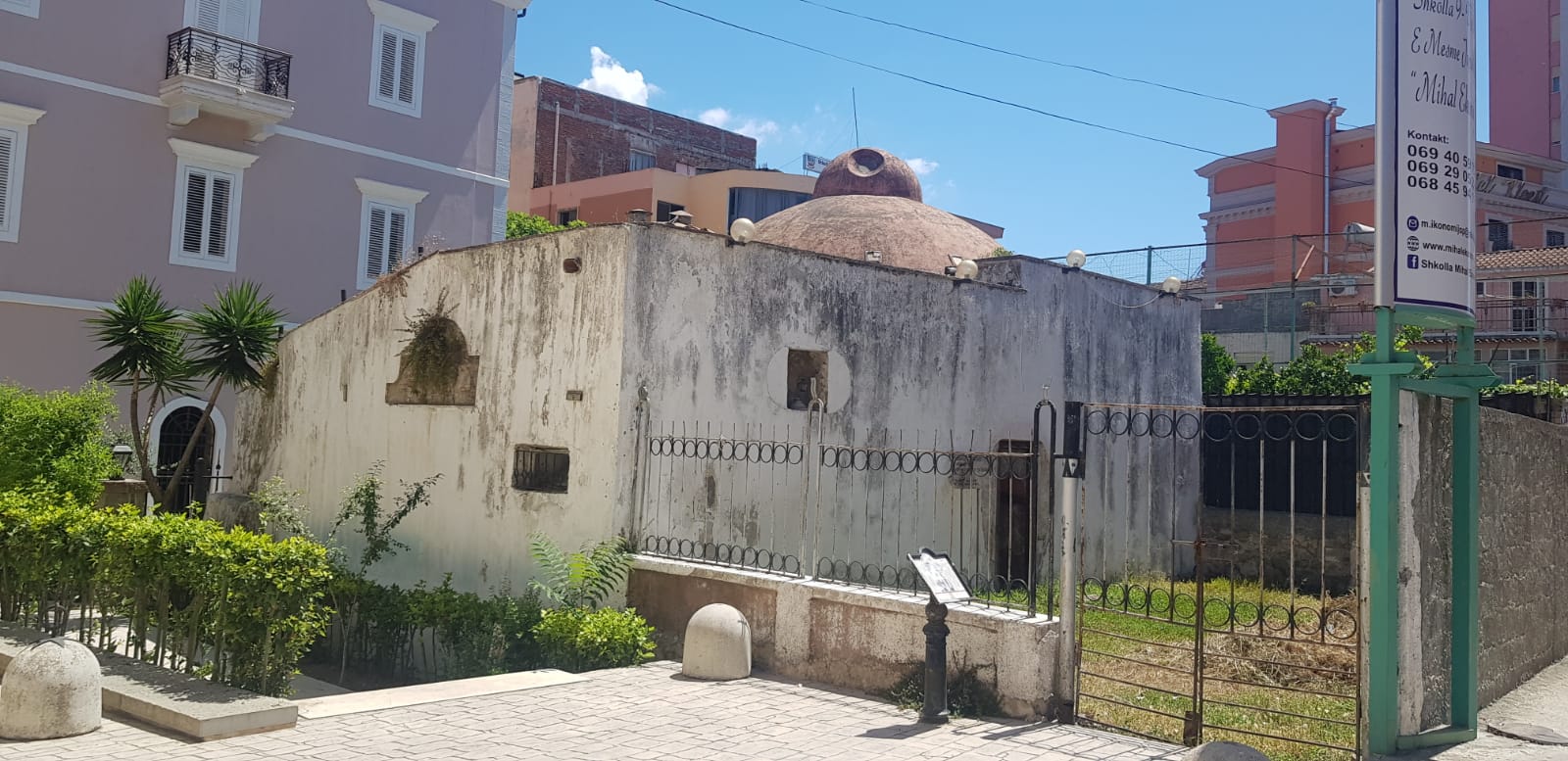
The medieval hammam located in the heart of the city, remained locked. According to the residents, the key of the door was recently changed because if you push the gate, you could get inside it. At first glance, we failed to notice the cracks in the external structure of the building.
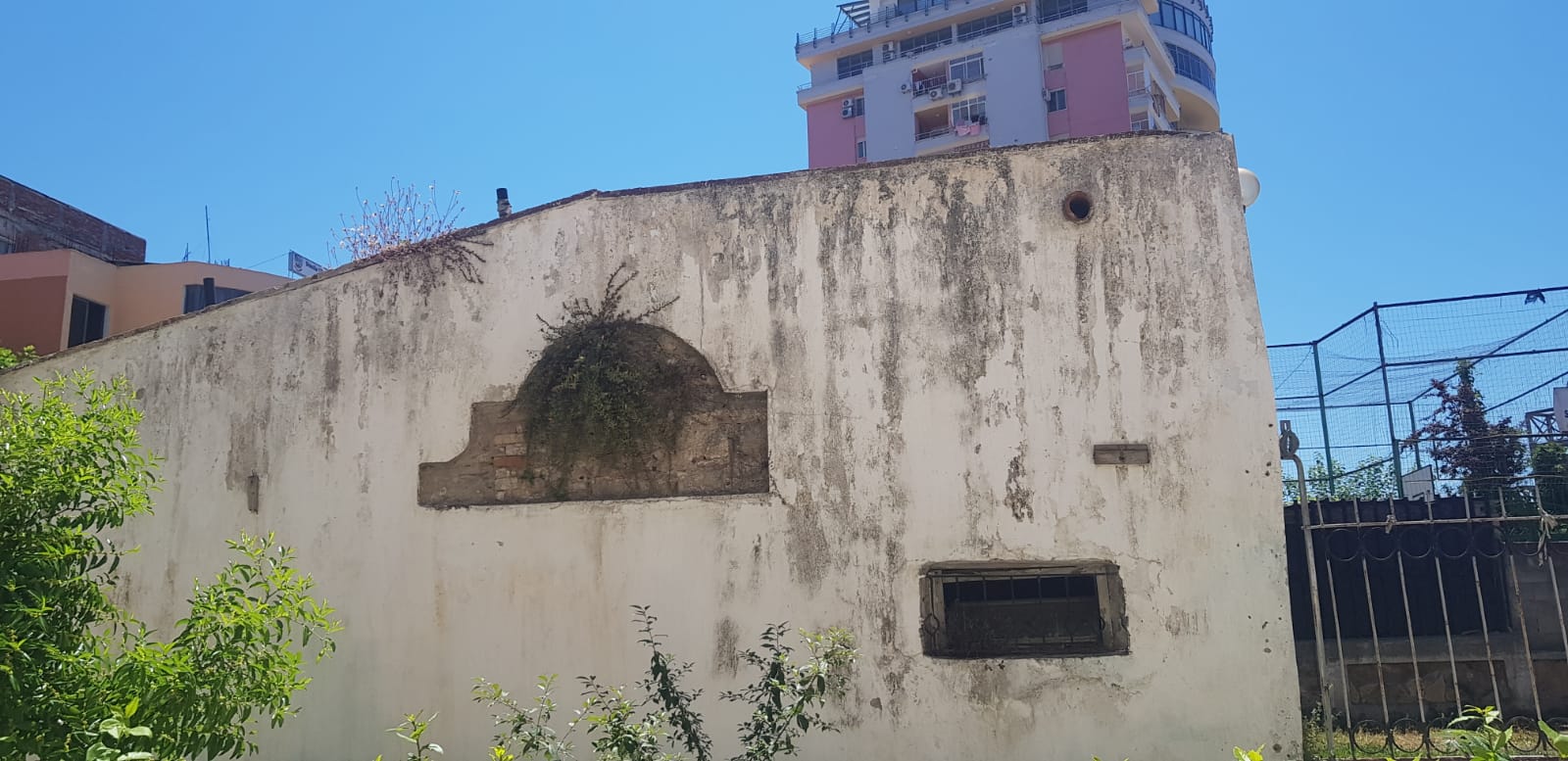
You could easily notice that the given place was not maintained: It was covered by vegetation and there was a high moisture reflected in the walls.
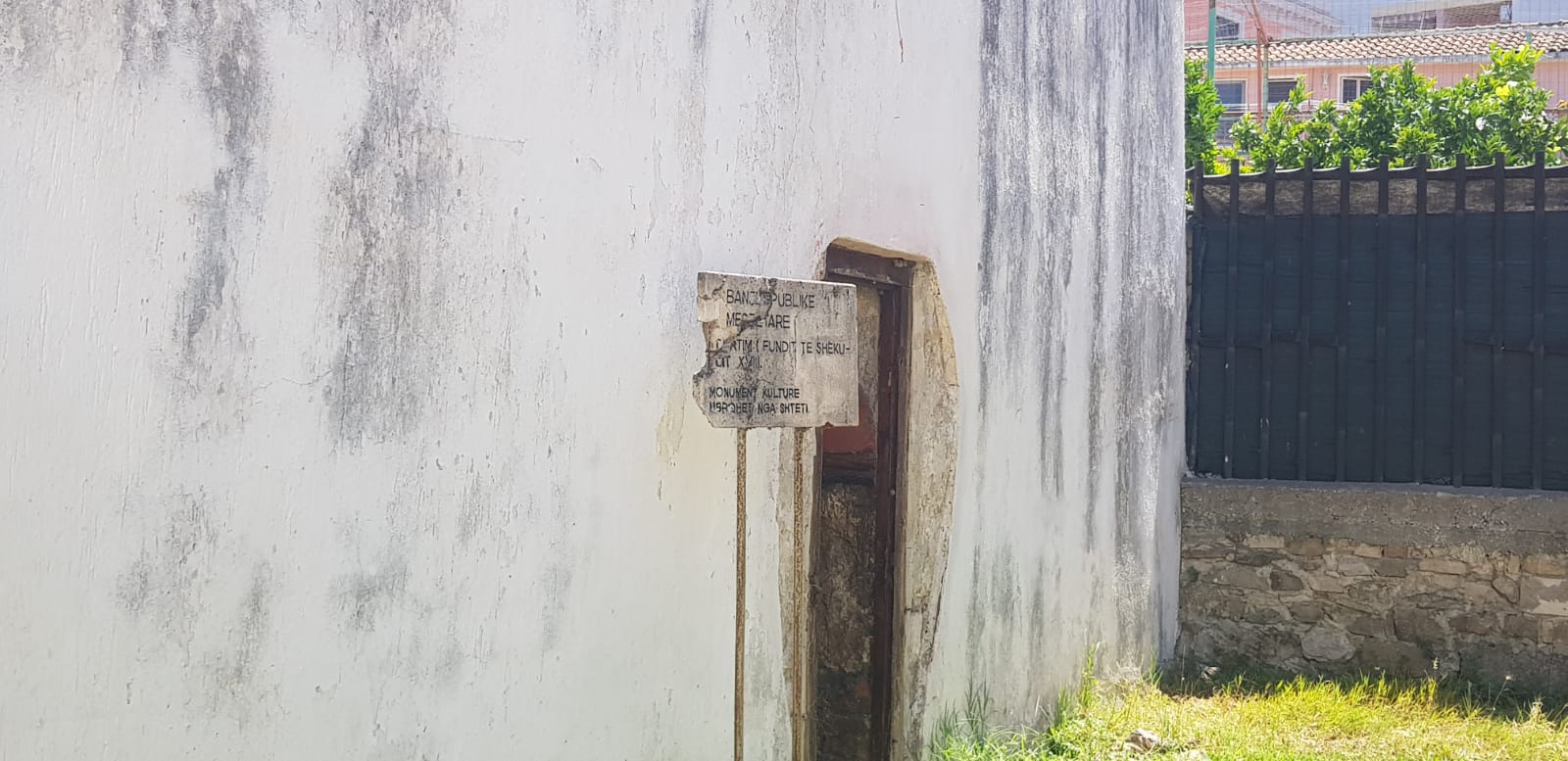
Based on the value addressed in the report of the Ministry, the total damage of the given cultural heritage site was estimated in the amount of 6,000,000 ALL, of which 420,000 ALL are calculated to be used for evaluation, study and design.
As far as could be seen there was no record of rehabilitation works.
7. ‘St. Ndoji’ Church at the Cape of Rodon – There is no any identification sign

Following the verifications, Faktoje also visited the Ruins of the “St. Ndoji” Church at the Cape of Rodon.
The building was largely maintained, but the EU EU4CULTURE had not started the restoration works. Actually, we do not know for sure if they had started work as there was no identification sign of the works.
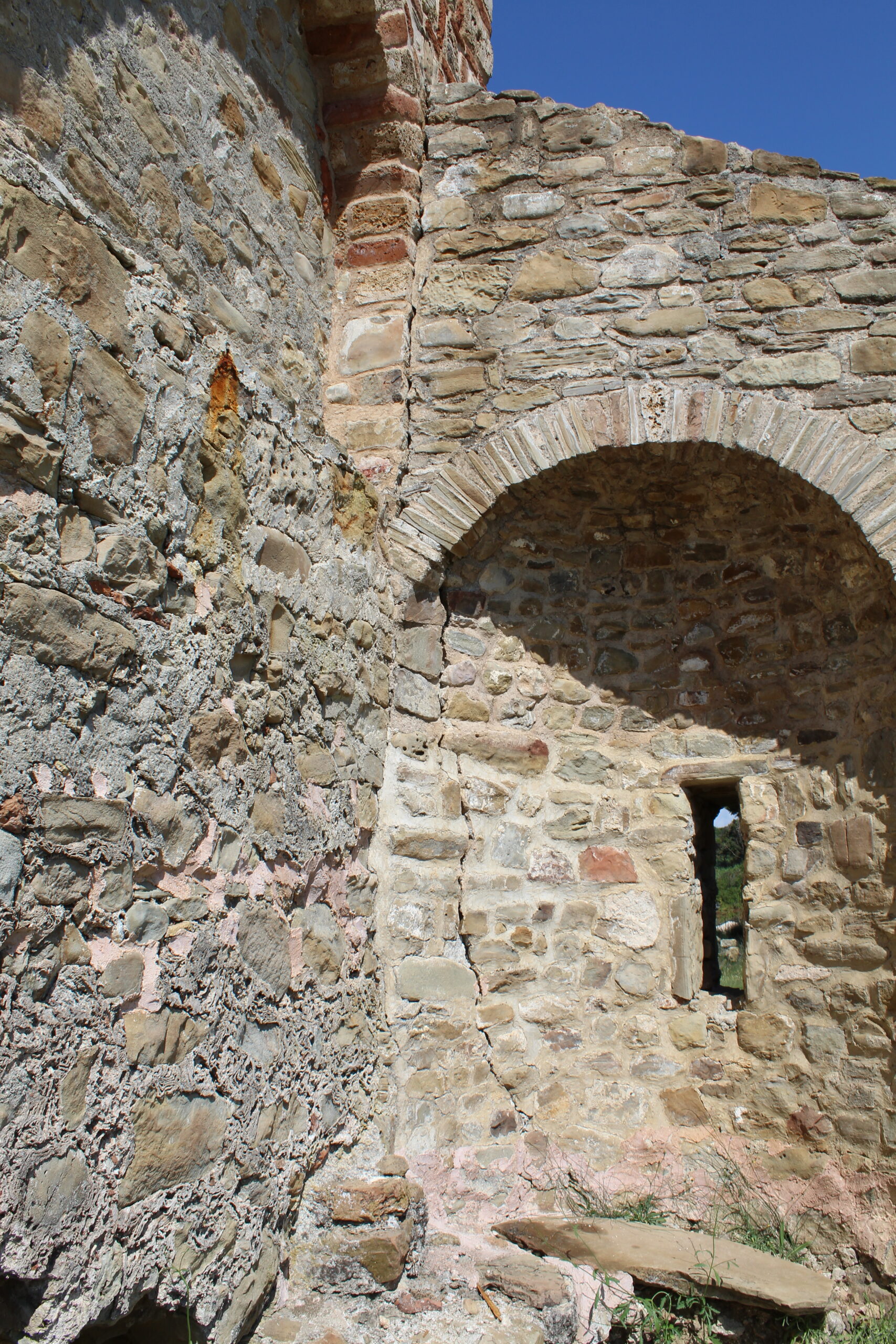
In the eastern part of the church there was a crack that could be noticed in the entire height of the wall.
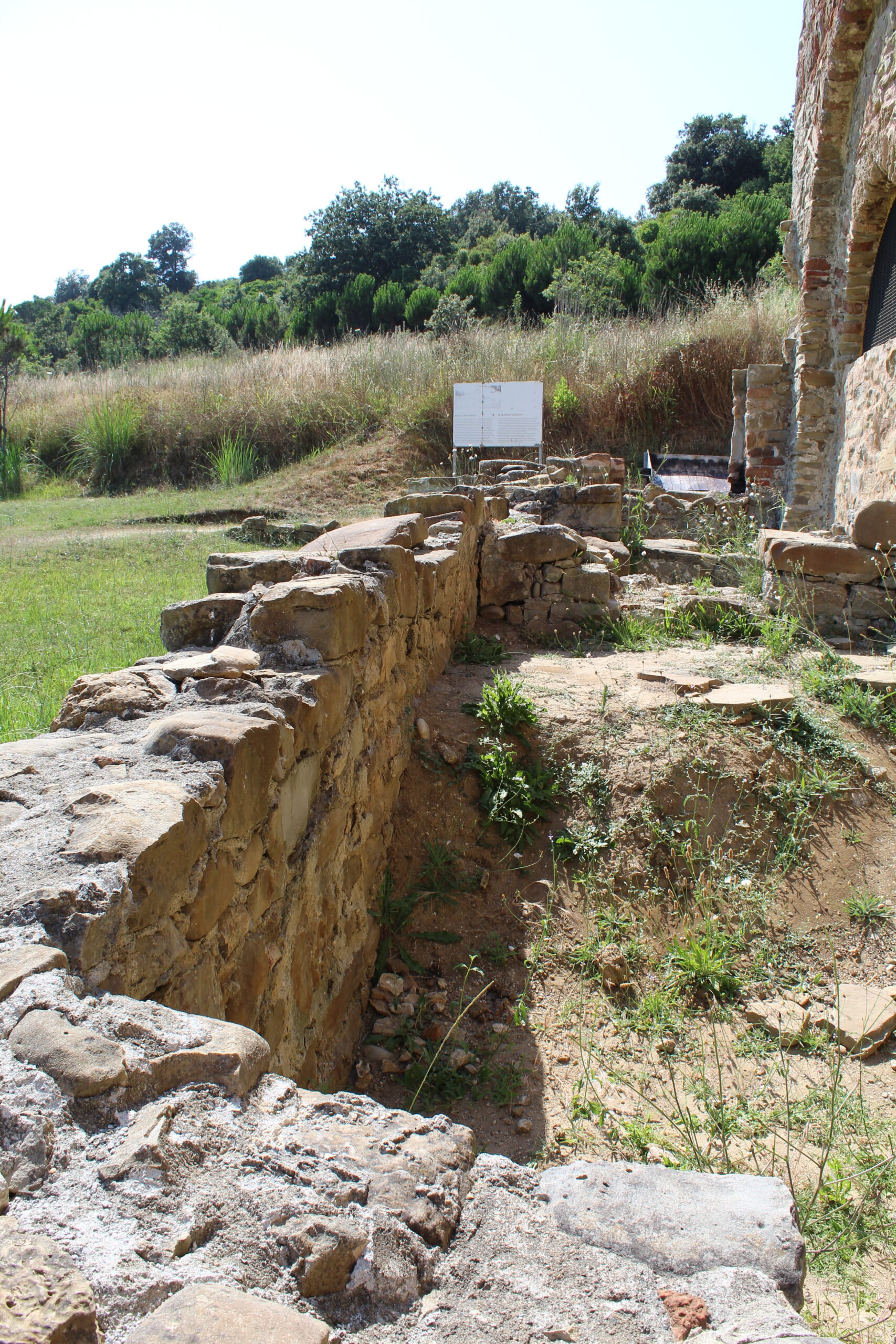
Photo Illustration of the ruins in the eastern part of the church. Photo: 04.07.2021
Inside, the walls of the church were wet and such a condition endangered the longevity of the idyllic frescoes painted on its walls.
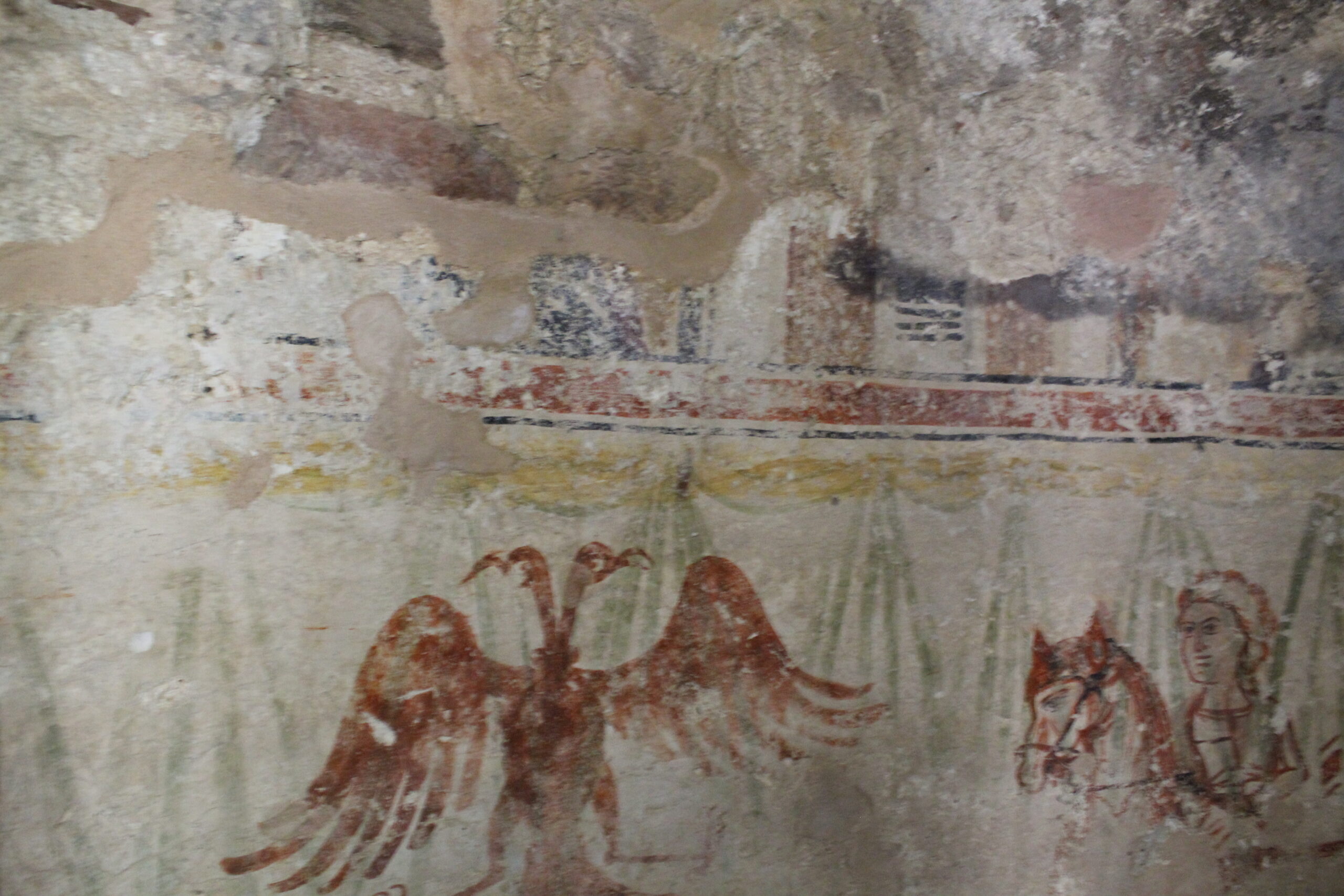
Photo illustration of the fresco painting of the “Ndoji St” Church. Date: 04.07.2021
- Rodon Castle in “Muzhlin e Skënderbeut”at Cape of Rodon

Castle of Rodon Cape, also known as Skanderbeg Castle, is one of the monuments listed as affected by the earthquake. Faktoje during the site verification failed to detect cracks in the structure.

Castle walls have been previously damaged.
Based on the report of the Ministry of Culture, the Castle of Rodon and the ‘St. Ndoj”Church in Cape of Rodon are both estimated within the total damage of 1,800,000 ALL, of which 126,000 ALL have been calculated to be used for evaluation, study and design.
Based on the inspections carried out by Faktoje, we confirmed that only one out of eight buildings listed in the list of affected cultural heritage sites is being restored, even though it has been a year and eight months that have passed since the earthquake. Two of the historic buildings were evacuated and 6 others were not rehabilitated.
Note: Faktoje will continue to reflect with a series of articles the situation of cultural heritage sites after the earthquake of November 26, 2019.
* Cultural heritage site of category I is the construction with significant values and of special importance for the cultural heritage, which is preserved in its entirety of its tectonic and technical components. The composition of the volumes, the architectural treatment of the external and internal views, as well as the planimetric and functional solutions of these monuments cannot be changed.






